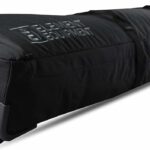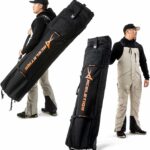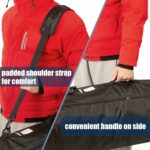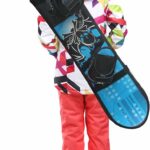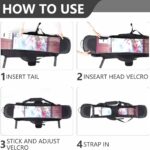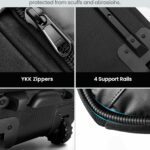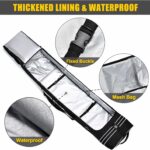Ever tried to solve the puzzle of whether snowboard bindings are adjustable? Well, you don’t have to wonder anymore. In this enlightening read, you will get to understand the answer in all its aspects. From the reasons why adjusting your bindings can enhance your snowboarding experience to how you can actually do it, every detail is elaborated as you navigate through. So, brace yourself for an insightful journey into the world of snowboard bindings and how to tweak them for your ultimate comfort and performance.
Understanding Snowboard Bindings
Snowboard bindings are crucial elements of your snowboarding gear. They are the components that connect your snowboarding boots to the actual snowboard, ensuring you have the control that you need to navigate the slopes with dexterity.
Purpose and function of snowboard bindings
The main function of snowboard bindings is to transfer your body’s movements to the snowboard. They function by securely locking your boots in place on the board, enabling you to manipulate the board’s direction and speed through your feet. The bindings act as a communicator between your body and the board.
Different types of snowboard bindings
There are different types of snowboard bindings which include strap-in bindings, speed-entry bindings, and step-in bindings. Your choice depends on your skill level, personal preference, and the style of snowboarding you intend to do.
The Adjustability of Snowboard Bindings
One critical feature of snowboard bindings is their adjustability. Adjustability ensures that you can alter the bindings to fit both your boots and your unique riding style appropriately.
Exploring the adjustability feature
The adjustability feature allows you to manipulate the size, angle, and stance of your bindings to accommodate your comfort and performance needs. This feature is more prominent in high-end bindings, but most bindings will offer some level of adjustability.
Benefits of adjustable bindings
Adjustable bindings can enhance your performance on the snowboard since they allow for a more personalized and comfortable setup. With the right adjustments, you can ensure optimum weight distribution, balance, and control over your snowboard, which is key to an enjoyable and safe snowboarding experience.
Parts of Snowboard Bindings that are Adjustable
Most parts of snowboard bindings are adjustable and they include the highbacks, straps, footbed, and heelcup.
Highbacks
The highbacks are the vertical plates located at the back of the binding. They provide support to your legs and aid in applying pressure during turns.
Straps
The straps are the parts that secure your boots onto the bindings. The adjustability of these straps ensures that your boots are adequately tight or loose, depending on your preference.
Footbed
The footbed is where your boot sits on the binding. It’s usually padded for comfort and can be adjusted for a customized fit.
Heelcup
The heelcup is the part of the binding that envelops your heel. It helps in controlling your board since it’s designed to move in conjunction with your heel.
How to Adjust Snowboard Bindings
The process of adjusting snowboard bindings requires some specific tools and a keen understanding of what you’re doing to avoid any mistakes.
Tools required
You’ll need a screwdriver or an allen wrench to adjust your bindings. The sizes of the screws can vary, so make sure you have the right tool to fit.
Steps for adjustment
The first step in adjusting your bindings is to loosen the relevant screws. Move the components to your prefered setting, and then retighten the screws. It’s crucial to ensure that all screws are secure to prevent any mishaps while snowboarding.
Safety precautions
Always ensure that you’re adjusting your bindings on a flat surface to prevent any accidental slippage. Also, check the adjustments carefully before hitting the slopes.
Adjusting Highbacks
Highbacks are critical for control and comfort while snowboarding.
Understanding the role of highbacks
The highbacks allow for control and stability when making heel-side turns. The angle and height of the highbacks can affect your performance dramatically.
Steps to adjust highbacks
To adjust the highbacks, loosen the screws at the sides. After that, align the highbacks to the desired angle before retightening the screws. Ensure they are not too loose or too tight to avoid discomfort or loss of control.
Common problems encountered
One common issue with adjusting highbacks is over-tightening the screws, which can strain the material and even cause breakage. Another problem is setting the wrong angle that doesn’t match your riding style, leading to decreased performance and potential discomfort.
Modifying Straps
Straps are key in ensuring a good fit between your boots and the bindings.
Purpose of straps
Straps are crucial in keeping your boots secure on the binding platform. The tightness of the straps can significantly impact your control over the snowboard.
How to adjust straps to fit boots
To adjust the straps, locate the adjustment screws, loosen them, then position the straps according to your prefered tightness or looseness so they can fit the boots appropriately. After that, retighten the screws securely.
Dangers of incorrectly adjusted straps
Incorrectly adjusted straps can lead to diminished control and uncomfortable pressure points. In extreme cases, it may also lead to your boots becoming unsecured, posing a significant safety risk.
Customizing the Footbed
The footbed is crucial for providing a comfortable platform for your boots.
Role of the footbed in snowboarding
The footbed absorbs shock and reduces vibrations, providing you with a smoother ride. The angle and position of the footbed can also impact your ability to control the board effectively.
Methods to adjust the footbed
To adjust the footbed, find the adjustment screws often located at the base, loosen them and slide the footbed to your desired position. Once done, tighten the screws back into place.
Ensuring proper footbed alignment
Proper footbed alignment is crucial to comfort and control. The footbed should be in a position that allows your feet to be flat and comfortable, ensuring an effective distribution of weight and power.
Adjusting Heelcup
The heelcup is an important part of the binding that can affect your control on the snowboard.
The function of the heelcup
The heelcup holds your heel and helps in directing your power from the legs to the board effectively. It provides stability, especially during turns.
Steps for adjusting the heelcup
Adjusting the heelcup involves loosening its screws, repositioning it to your desired setting, and then retightening the screws. You should aim to achieve a snug fit without restricting your foot movement.
Checking the fit after adjustment
After making your adjustments, check the fit by inserting your boots into the bindings and doing a few practice movements. The heelcup should feel secure but not overly tight.
Understanding the Impact of Binding Adjustment on Performance
How you set up your bindings plays a significant role in your overall snowboarding performance.
How adjustment affects snowboarding performance
Each adjustment can drastically affect your ability to control your board. Too loose, and you may lose control; too tight, and you might feel discomfort or restricted movement. An optimal setup will allow for precise control, comfort, and an improved snowboarding performance.
Personalized adjustments for different styles of snowboarding
Different styles of snowboarding require different binding adjustments. For instance, freestyle snowboarders might loosen their bindings for more freedom of movement, while downhill snowboarders might prefer a tighter setup for greater control.
Frequent Adjustments and their Effects
Changing your settings regularly can have several effects on your snowboarding experience and your gear itself.
Impact of frequent adjustments on bindings
Regular adjustments can cause your binding parts to wear out faster. However, it also allows you to fine-tune your setup to suit different snow conditions or riding styles, ultimately improving your performance on the slopes.
Balancing adjustability and stability
While adjustability allows customization, excessive adjustments might compromise the stability of your bindings. It’s therefore vital to strike a balance between customization and maintaining a secure binding setup.
Maintenance for adjustable bindings
Ensuring proper maintenance of your bindings is crucial. Regularly check and tighten any loose parts, and clean your bindings thoroughly after each use to prevent any dirt from causing wear or inhibiting any necessary adjustments. And at the end of the day, always remember, a well-adjusted binding is key to a great snowboarding experience!
- What Snowboard Bindings Should I Get? - January 23, 2024
- What Size Screws For Snowboard Bindings? - January 23, 2024
- How To Snowmobile On Water? - January 23, 2024

